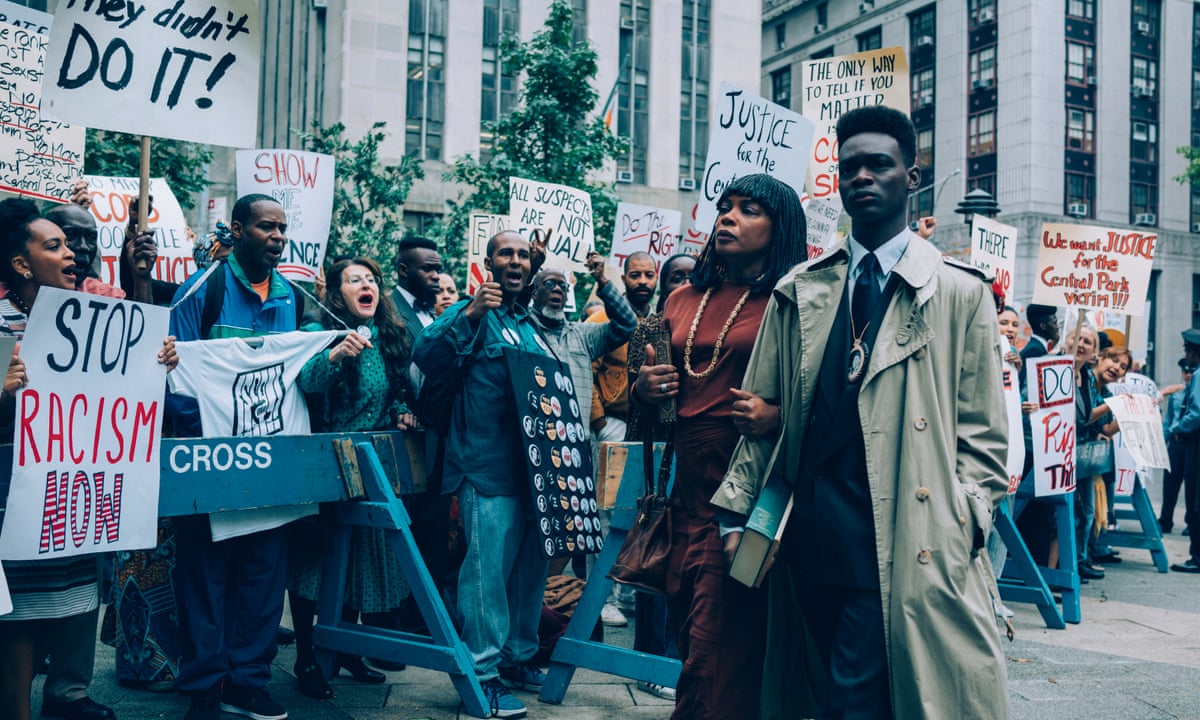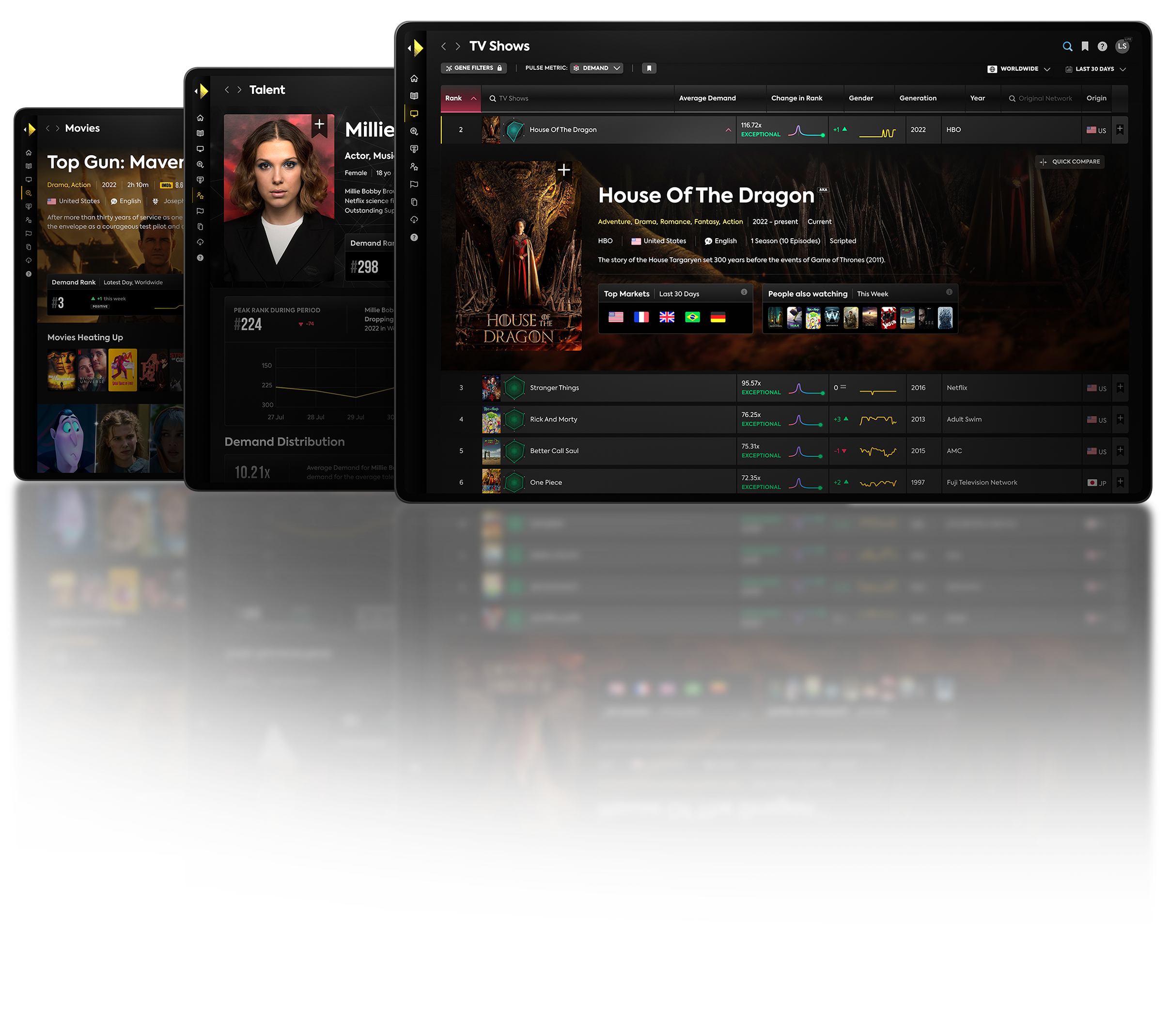In the days following George Floyd’s killing, as protests against systemic racism and police brutality spread across the US, audiences’ attention was drawn away from their usual content consumption. From May 15 to June 4, we measured a 17.8% drop in demand across all TV shows in the US. Normally demand at such a high level is relatively stable. It is clear the extent to which this tragedy has captured the public’s attention. We measured a similarly precipitous drop in total US demand in the days following the first confirmed case of COVID-19 in the US as news of the pandemic dominated the news and transfixed audiences.
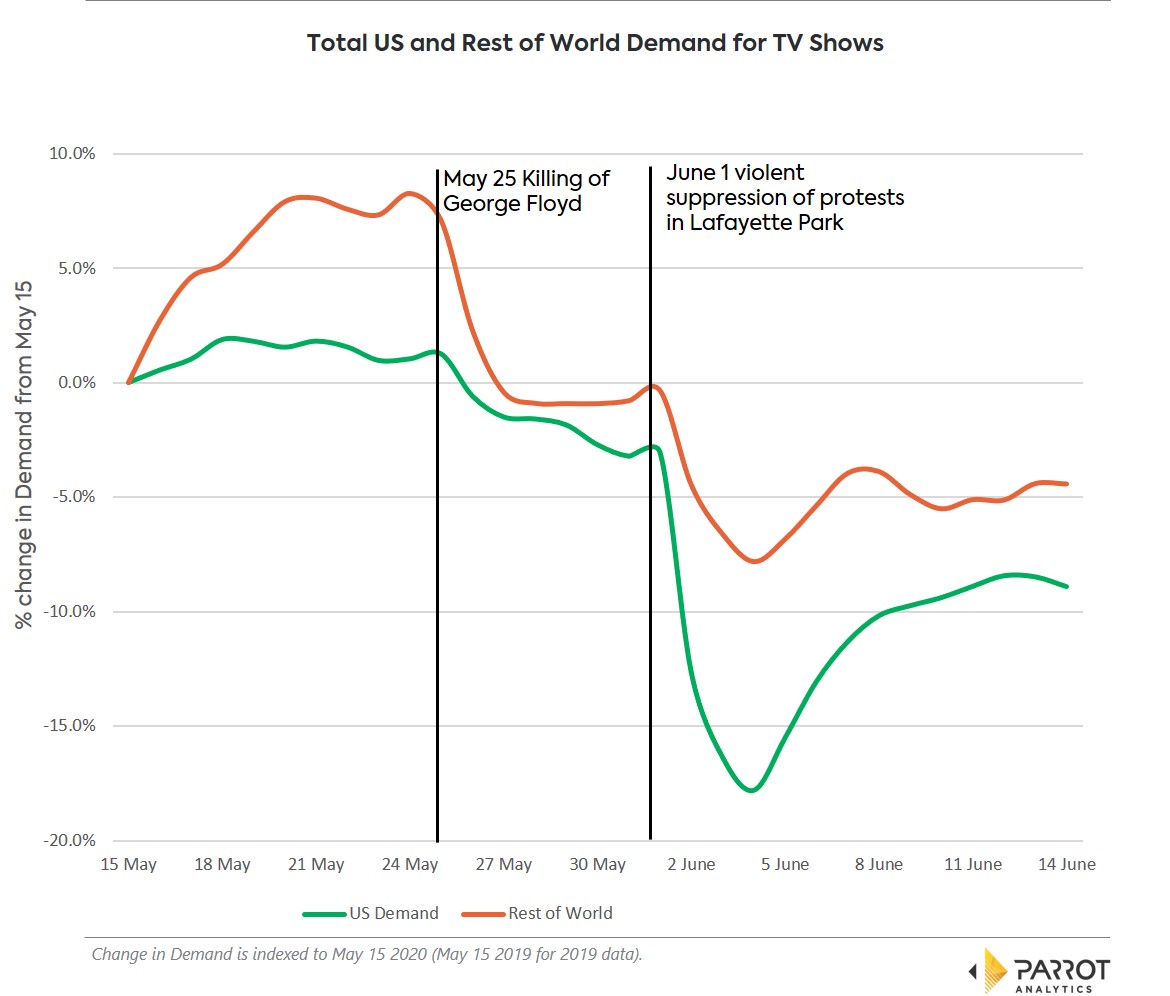
Although protests began in the United States, they quickly spread around the globe. Protests have been held in over 60 countries so far, both directed toward America and focused on local issues. The international impact of these events can be seen in the total demand for TV shows in all countries outside the US where we measured a 7.8% drop from May 15 to June 4.
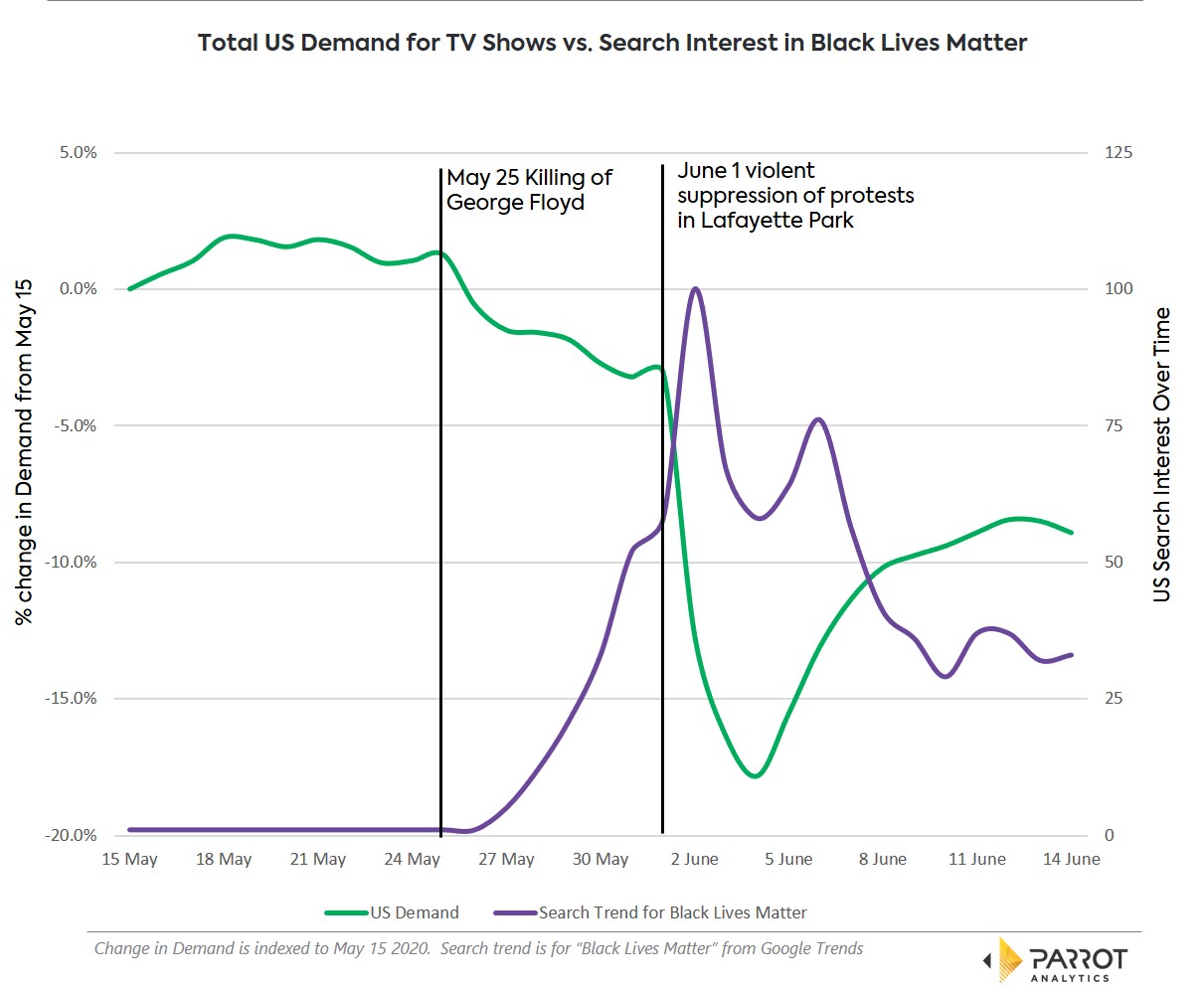
To give context to the issues commanding the public’s attention, we plotted search trends for “Black Lives Matter” from Google against this drop in demand. The peak interest in this topic coincides with the largest daily drop in demand in the period we measured and follows the June 1st suppression of protests in Washington DC. These events captured the public’s attention and increased awareness of issues at the heart of protests. This chart makes clear that one way in which audiences' attention has been draw away from TV series is by researching timely and relevant topics such as Black Lives Matter.
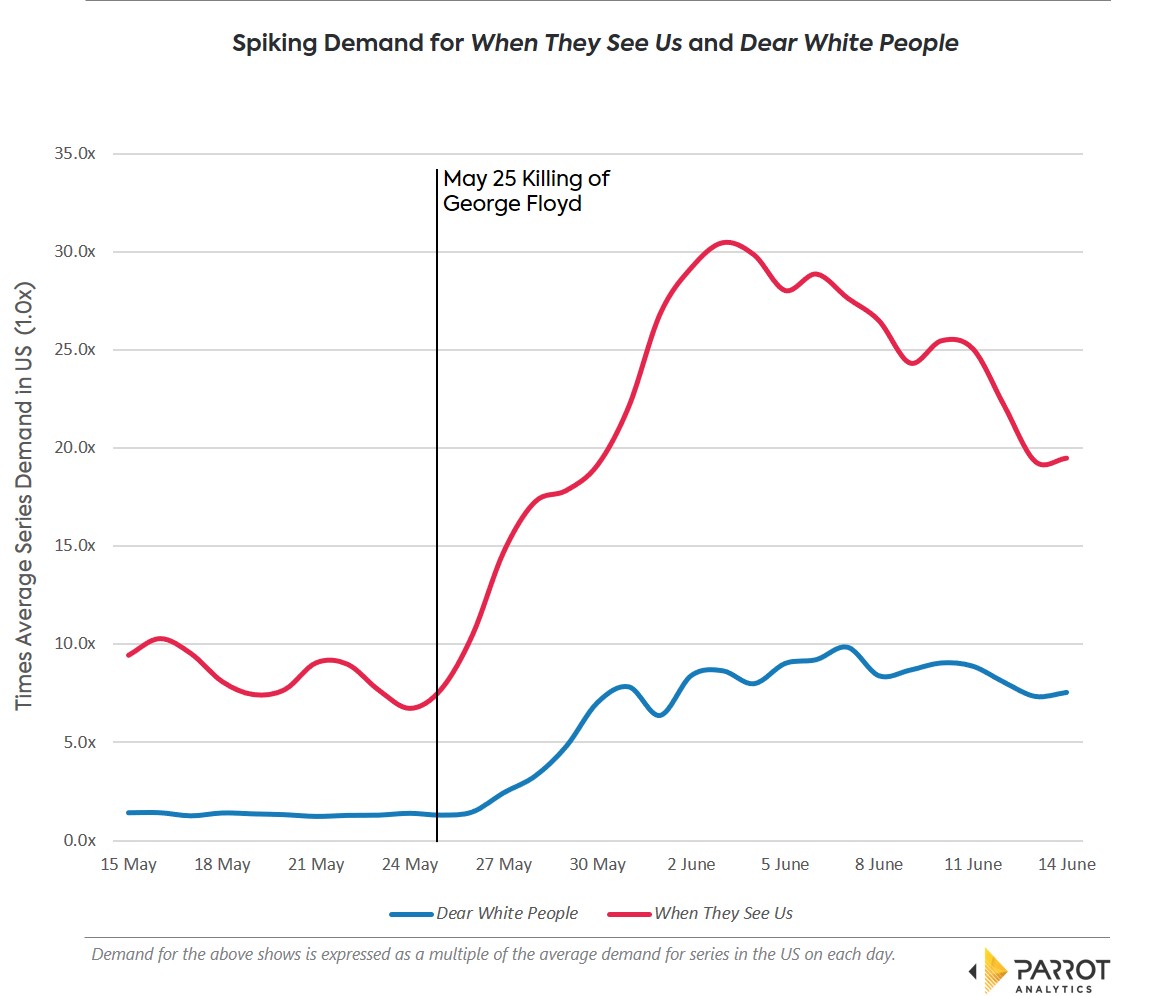
While total demand for TV series in the US fell in the weeks following George Floyd’s death, not all series fit this trend. The above two series in particular saw surging demand during this time. When They See Us rose to a peak of 30.5 times the average series demand on June 3rd. Demand for Dear White People rose to a peak 618% higher than its level on May 24. Neither of these series have aired new episodes since August of 2019, clearly suggesting the recent news events have helped spark new interest and audiences for this content.
“During a week of pain and protest, these series are finding a resurgence of demand,” said Ashley Alleyne-Morris, Parrot Analytics Partner Insights Director. “Whether it’s a satirical look at dealing with discrimination at majority white spaces (universities) or a true story about the miscarriage of justice faced by the Central Park Five, new audiences appear to be turning to these stories as a form of education and understanding of the Black experience in America.”
